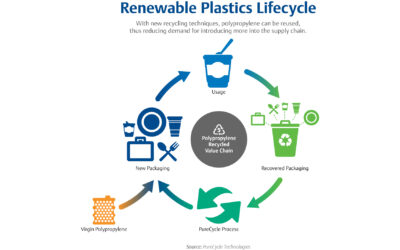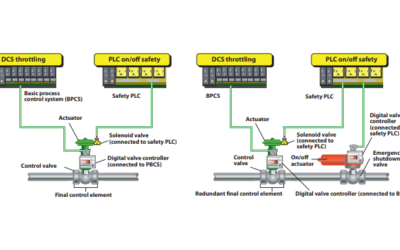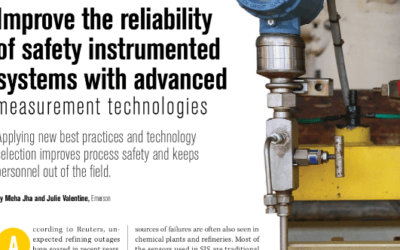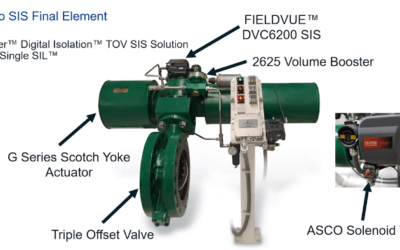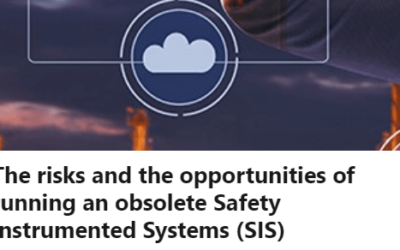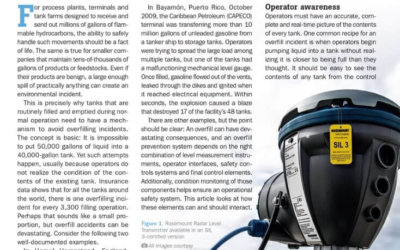At the Emerson Exchange Immerse conference, the user community was treated to a presentation on how safety instrumented systems were incorporated into PureCycle Technology’s “Born Digital” strategy.
IEC 61511
Driving Safer Chemical Manufacturing Performance
Safety is consistently among the highest priorities for manufacturers and producers. Critical goals are to avoid safety incidents, keep site personnel safe, protect the community around you, protect the environment as a whole, and improve your corporate financial health. A robust safety culture has many facets, including occupational safety, containment safety, process safety, and functional safety.
Control Valves in Safety Instrumented Functions
When is it possible to use control valves like final elements for SIS [safety instrumented system] application? I am looking for other useful documents and technical requirements when it is possible to use only control valves as the final element instead of on/off valves and not in combination with it in the SIF [safety instrumented function] application.
Advanced Sensor Technology in Safety Instrumented Functions
In a Process Engineering article, Improve the reliability of safety instrumented systems with advanced measurement technologies, Emerson’s Julie Valentine and Meha Jha share how technology advancements combined with best practices helps drive process safety improvements.
Remote Proof-Testing of Level Measurement Devices Supports Safer Tank Operations
Storage tanks containing hazardous materials require safety instrumented systems (SIS) to prevent overfills. Digital technology in the latest level measurement devices used in SIS enables them to be proof-tested remotely, which provides significant advantages. The...
Extending Final Element Proof Testing Intervals
I received a question from a very old post here on the blog, Credit for Partial Stroke Tests in Verification Process. The person was trying to get a better understanding about this chart showing how partial stroke tests (PSTs) can extend the intervals between full stroke tests for final elements in a safety instrumented function (SIF).
Diagnostics for Final Elements in Safety Applications
At the Emerson Exchange Americas virtual series, Emerson’s Mike Hoyme and Stanley Af demonstrated diagnostics in the final elements within a safety instrumented function.
Safety Instrumented System Useful Life
In a LinkedIn article, The risks and the opportunities of running an obsolete Safety Instrumented Systems (SIS), Emerson’s Mohamed Salman shares his expertise on evaluating the component subsystems in a SIS as they age.
Understanding Functional Safety Concepts and Final Element Suitability
The world of functional safety has its own tribal language and acronyms, e.g. safety instrumented systems (SISs), safety instrumented functions (SIFs), logic solvers, final elements (FEs), safety integrity level (SIL), probability of failure on demand (PFD), etc. In a...
Approaches to Partial Stroke Testing Safety Valves
The safety valve within a safety instrumented function (SIF) must be tested regularly to help assure proper operation in the event of a safety demand. Operators usually perform an offline full stroke test during a scheduled shutdown because of the impact of this test...
Reducing Level Detector Proof Testing Complexity
Each safety instrumented function (SIF) including its sensor, logic solver and final control element must be periodically tested to make sure it will perform as designed in the event of a safety demand. These "proof tests" help to uncover and failure conditions which...
Storage Tank Overfill Protection
Preventing overfill conditions in tanks and vessels is a job for safety instrumented systems across many industries. In a Flow Control article, A Systemic Approach to Storage Tank Overfill Protection, Emerson's Lydia Miller and AnnCharlott Enberg describe the key...
Keep Up to Date With the Latest News and Updates
Follow Us
We invite you to follow us on Facebook, LinkedIn, Twitter and YouTube to stay up to date on the latest news, events and innovations that will help you face and solve your toughest challenges.
Do you want to reuse or translate content?
Just post a link to the entry and send us a quick note so we can share your work. Thank you very much.
Our Global Community
Emerson Exchange 365
The opinions expressed here are the personal opinions of the authors. Content published here is not read or approved by Emerson before it is posted and does not necessarily represent the views and opinions of Emerson.
